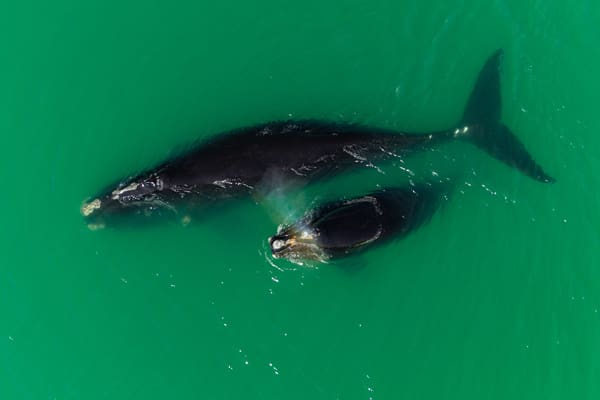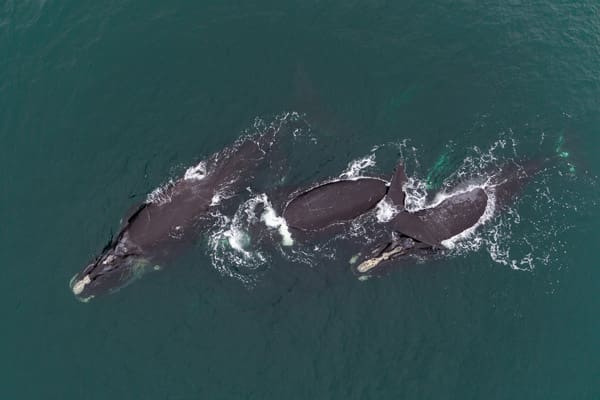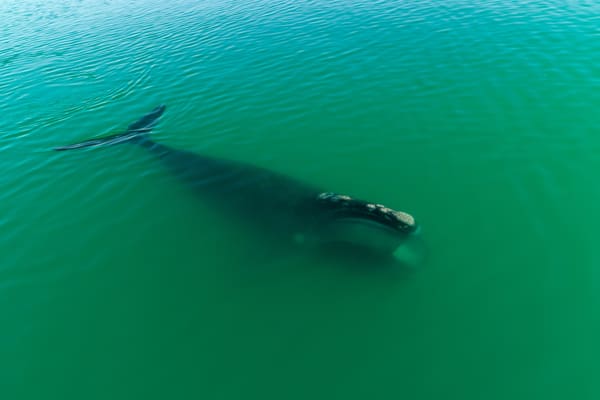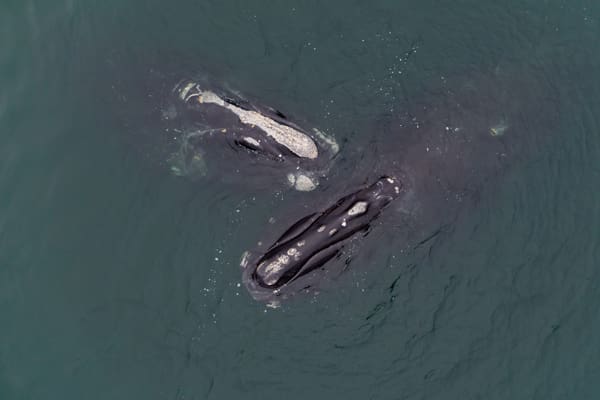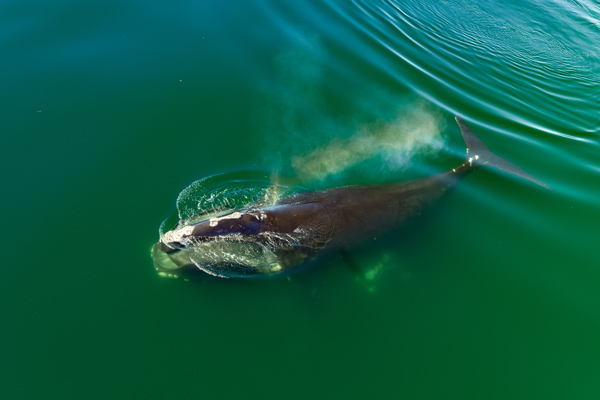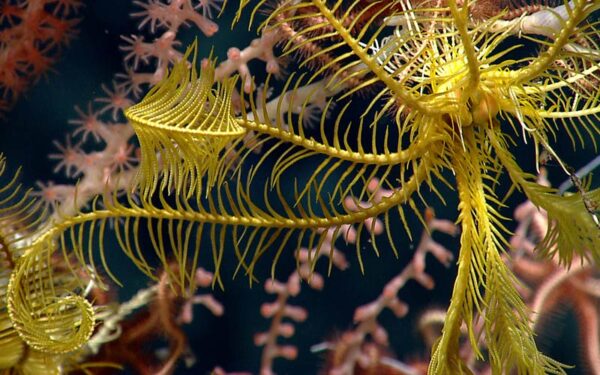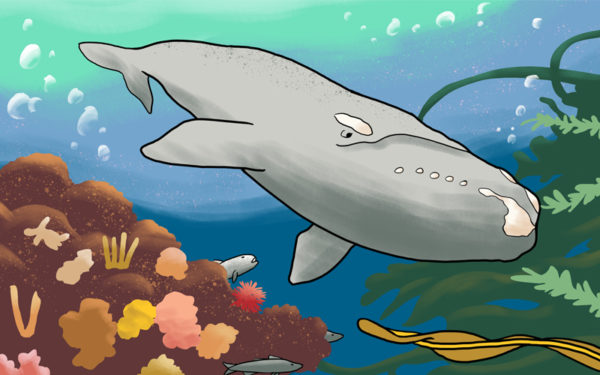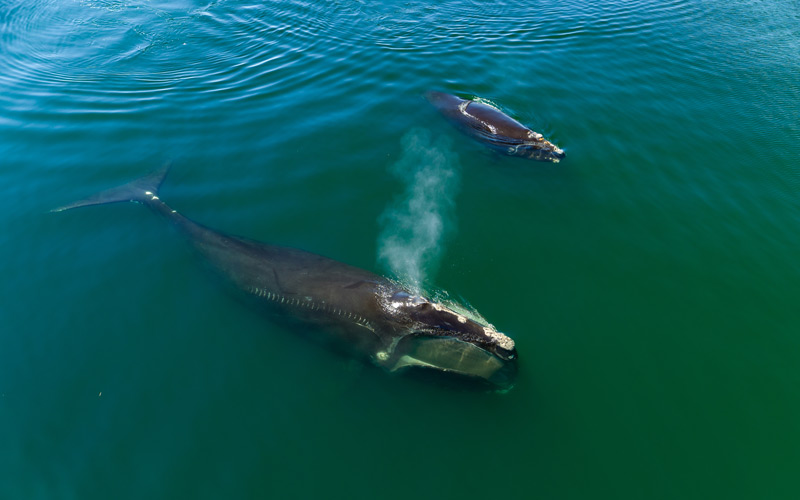
Learn how the power photography can help save the critically engangered North Atlantic right whales. Photo: Brian Skerry/Steve De Neef.
In 2006, celebrated National Geographic photojournalist Brian Skerry began a journey to photograph the most endangered large whale on the planet, the North Atlantic right whale. He hoped that these images would shine a light on this species and help people understand their problems.
Through a comparative story, Brian showed striking differences between the North Atlantic right whales on the U.S. East Coast and their cousins, the Southern right whales in New Zealand. The whales in the south looked healthier and free of the entanglement and ship strike scars that marred the North Atlantic right whales.
Since then, Brian has traveled around the world documenting whale species and their unique cultures. Now, he has come back to New England waters to photograph the critically endangered whales from a new perspective.
In early 2021, CLF partnered with Brian Skerry and Michael Moore, a renowned marine biologist with Woods Hole Oceanographic Institution (WHOI). Together, we worked to capture rare images of the North Atlantic right whales in their feeding grounds in Cape Cod Bay.
We sat with Brian to learn more about his hopes, goals, and challenges he faced while photographing this magnificent species during this expedition.
This interview has been edited for clarity.
What are your hopes and goals for these images?
The more that we can keep these issues in front of people’s eyes and minds, the better chance we have of building a constituency that cares for these animals.
So, what can we do to that end? We have to engage people. People have a preconceived notion of what a whale looks like, and right whales don’t look like a whale to most people. They’ve got a giant head, and they have white callosities all over their bodies. You can’t even figure out where the eye is located. So, the goal is to make a picture that the viewer can understand.
I hope that we can create visuals that support the science and capture a holistic image. If we can get people to invest emotionally in these animals, we can create solutions that will protect these animals and diminish the risk of extinction.
How do the whales you saw this year compare to what you photographed in your 2006–2007 expedition?
This time, we were primarily filming and doing aerial photography from drones. From a storytelling, visual, and scientific standpoint, having the ability to instantly launch a drone from the boat was a real advantage. And, seeing the whales from a low altitude and aerial perspective was eye-opening.
Back then, I saw the tip of the iceberg – the top of the head of the right whale, or maybe a little bit of the mouth on the surface. Now, from a bird’s-eye-view perspective, you can see from head to tail. You can see the animal rolling over and see its eye. You see if it has scarring on its body or intrusion from entanglement. You can even see when it’s below the surface of the water – a perspective that I never had before.
What were some of the highlights of this year’s expedition?
We were able to see surface active groups where whales gathered and socialized. We saw two whales belly to belly and with their pectoral [fins] over each other. It looked like they were hugging. And that was what we had hoped for. [We wanted] to create visuals that would give people some empathy for these animals.
Scientifically, it was important to see that perspective. But more important was the broader appeal to everyday people. These images will give [right whales] that humanity that we’re trying to achieve.
How does photographing North Atlantic right whales compare to other whales that you have photographed?
The immediate difference is that North Atlantic right whales are so critically endangered. So, we’re not allowed to go in the water with them. Even researchers with permits can’t get underwater with them.
The other difference was the health of the whales in the Southern Ocean [near New Zealand, where I filmed for the National Geographic story published in 2008]. Southern right whales were much fatter and healthier [than North Atlantic right whales]. They didn’t have scarring on their bodies.
The health of the whales in New Zealand was off the scale of what scientists use to measure the health of right whales here in the Northeast. This speaks to how embattled and beleaguered North Atlantic right whales are.
What’s a scene of North Atlantic right whales that you would like to capture someday?
It would be the underwater perspective. Some of the most endearing work we produced for National Geographic’s nature documentary series Secrets of the Whales was pictures of moms and calves underwater. If we could have also filmed the surface active group [of North Atlantic right whales] from underwater, we could have pieced together a story that would bring the viewer in to see the world from above and below.
What makes a good photo?
To me, there is a life force that emanates from all animals. So, once you’ve dialed in all the [technical] elements of a photo, then it comes down to a little bit of magic and a little bit of sparkle. And you can’t predict those things. You have to be patient. You could make 100 pictures, but there’s one picture that is special. That’s the image that people respond to emotionally.
[Overall], it takes a village to do one of these [projects]. I couldn’t do this without a team of talented people all rowing in the same direction. So, I’m honored and grateful to be able to go out and do this work, but none of it would happen without the researchers, the expertise, the attorneys, everybody here at CLF. It’s necessary work, and I hope we can continue with it.
Time for Action
Brian’s photography has brought us closer to North Atlantic right whales than many of us could ever imagine. By painting a full picture of the right whales, he has inspired thousands to fight for the future of this species.

